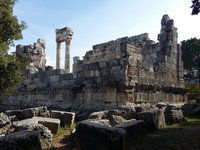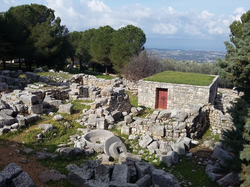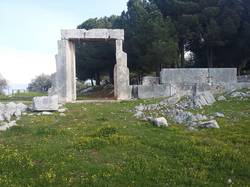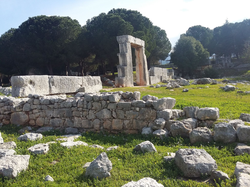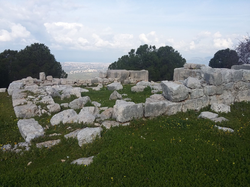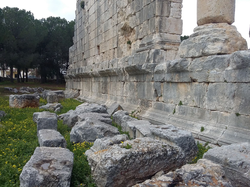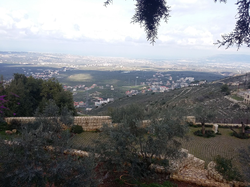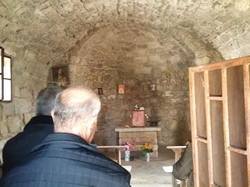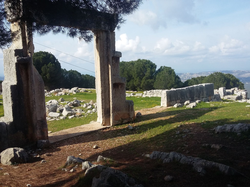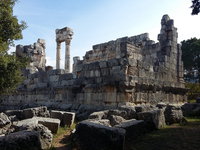Qasr Naous
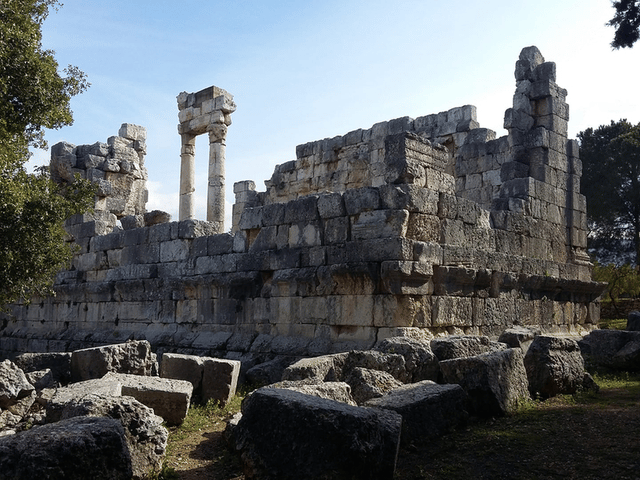
Qasr Naous
The two Roman temples are situated on a hilltop, some 600 meters above sea level, and must have been visible from a far distance.
The first temple, to the east is partially intact.
Like the sanctuary at Machnaqa, it has a decorated entrance gate (propylaea) and is surrounded by an enclosure (*temenos *). In front of the temple, the remains of an altar are visible, while a substantial part of the temple is still standing with the platform, two columns with Corinthian capitals, and part of the walls are preserved.
There are the remains of a staircase like the one in the large temple in Niha and the temple of Bacchus in Baalbek, that indicates a second floor.
Another similarity is the presence of an (inaccessible) crypt or basement.
From the description by the nineteenth-century scholar Ernest Renan, who visited the place in 1860-1861, we know that the lintel of the door of the first temple, which is now missing, was decorated with a winged sun disc: a motif that can also be found elsewhere and originated in Egypt and can also be found in the temple at Sh'him.
The second temple of Kasr Naous, to the west of the first sanctuary is also surrounded by a temenos enclosure.
An earthquake is suggested to have moved the big stones of the gate (which is perfectly preserved) from their bases.
[2]The second sanctuary is less well-preserved, and it would seem that it was destroyed in ancient times.
The stones have been taken from the ruin and have regrouped to restore the monument, but something was suggested to have prevented a reconstruction.
A relief with the face of the Sun God lies in the grass in front of the ruin.
See Also
Archaeology of Lebanon
Temples of Mount Hermon
